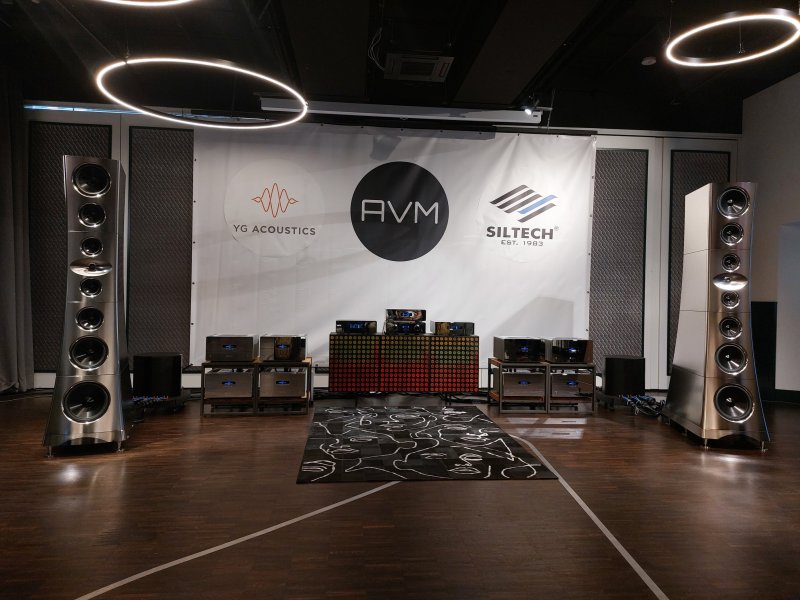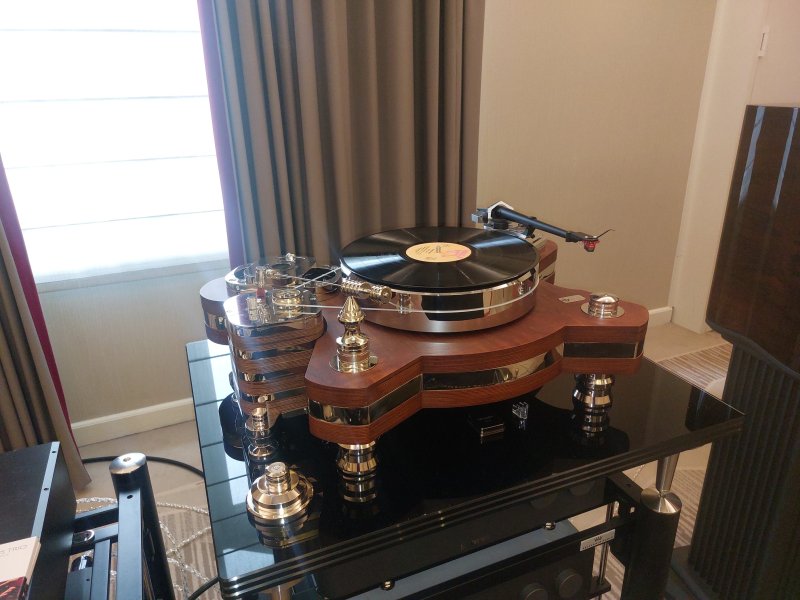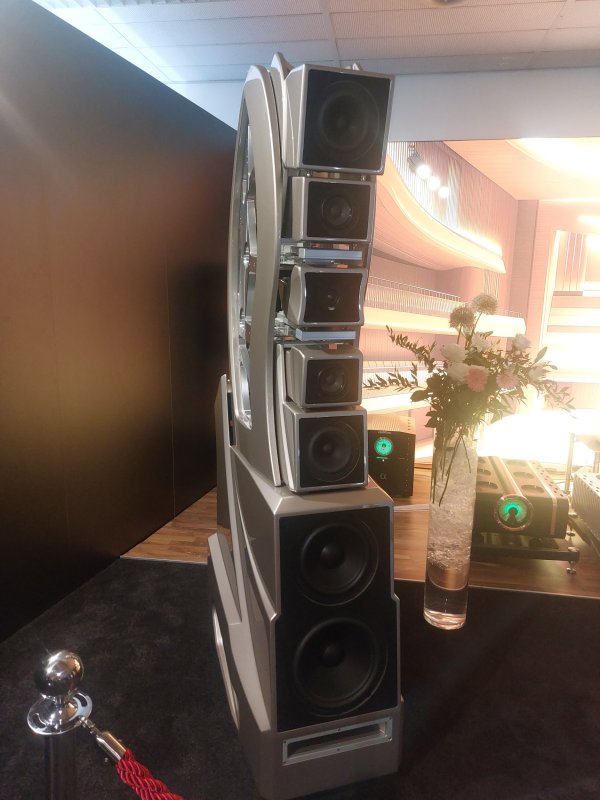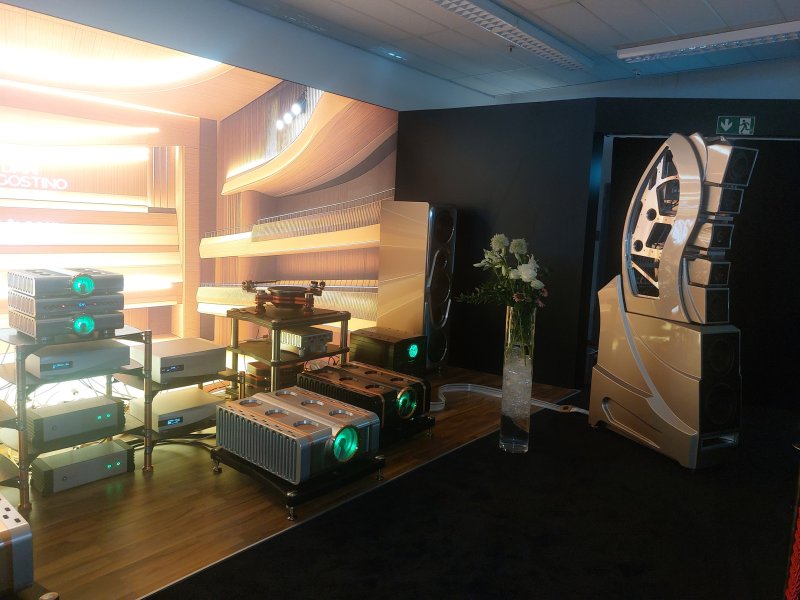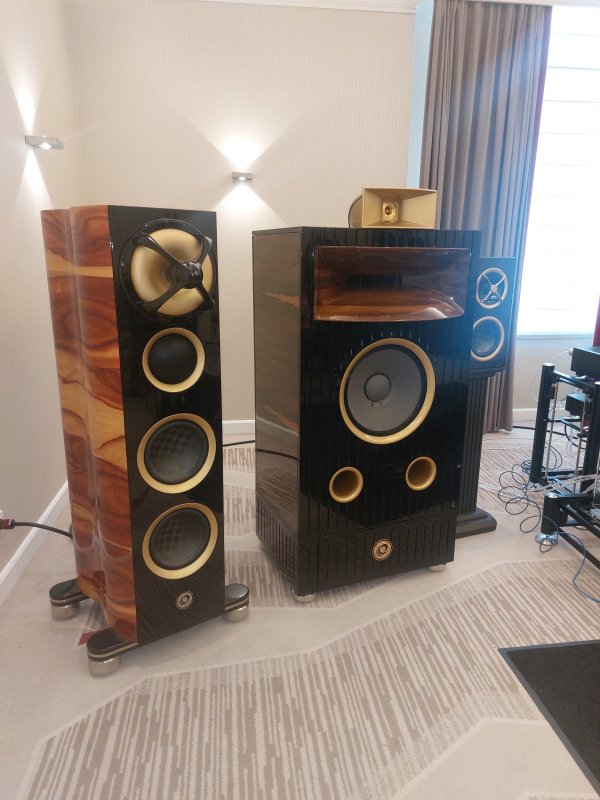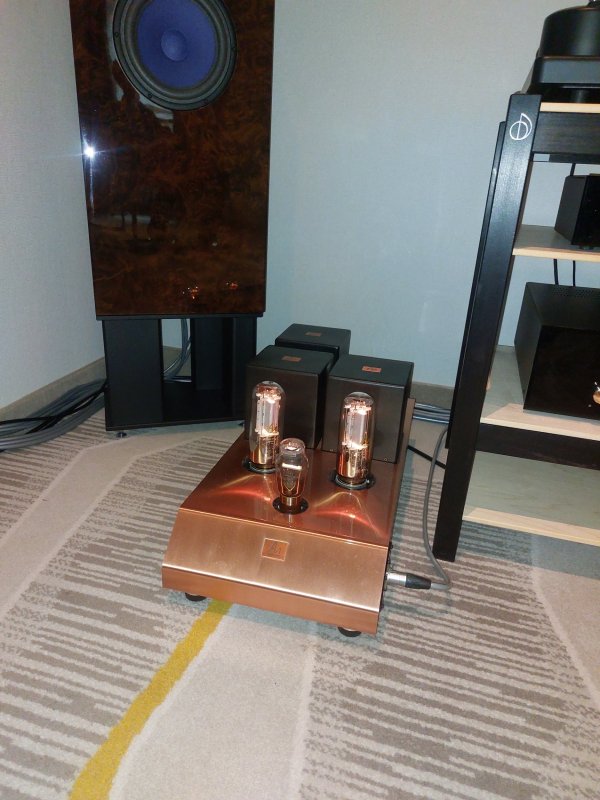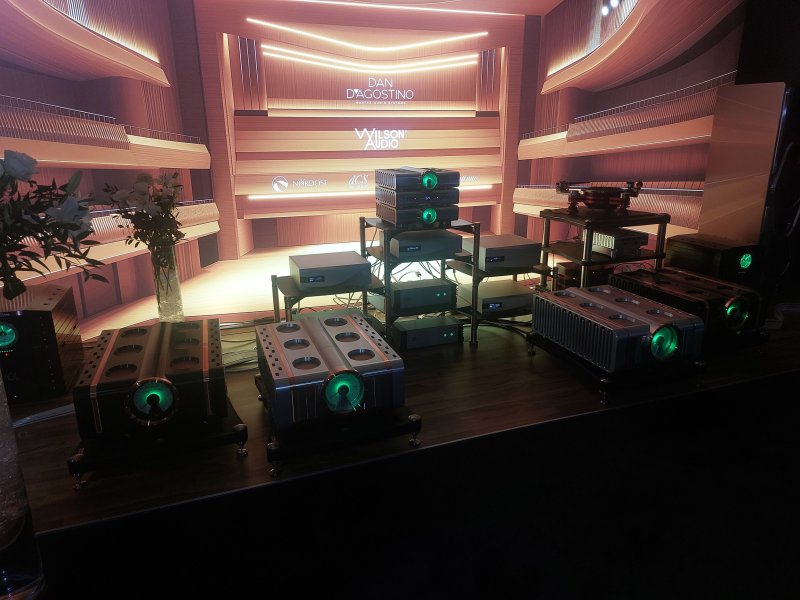There is a new think piece in "The Absolute Sound" that discusses what the author views as the 6 major problems in getting what he refers to as "believable" audio.

 www.theabsolutesound.com
www.theabsolutesound.com
This reminds somewhat of the old TAS where Harry Pearson would muse upon what made audio sound more realistic. What this article does is lays out the issues, what it doesn't do is attempt to address them with solutions.
This allows us members of WBF to debate these topics without any preconception from the author...other than we may not agree that all of these points are problems with believability in audio or that some that are important are missing.
The author starts with a statement about what audio is for, listing three points: 1) Enjoyment of music, 2) A quest for a system that makes believable music and 3) Appreciation of Progress
Of these three stated objectives for audio, I resonate strongly with the first two, meaning the enjoyment of music and a quest for a believable system are definitely reasons I am in the hobby. The third point to me is interesting but increasingly as I have personally journeyed in audio I find that there is not so much actual progress towards believability in reproduction (perhaps even some regressions in that regard) as there has been in a purely technical grounds. Yes, we have more advanced electronics, materials, circuits speaker designs etc. ...but how do they relate to the goal of audio believability? I was once believing that more advanced circuits, parts, materials and designs...all driven to reduce measurable distortions of various types, would lead to the greatest believability in audio reproduction.
The problem, as the author points out, is that this hasn't really been the case. I would argue that in some really key areas (some of his 6 problems below) audio had actually regressed compared to the best historical systems.
One interesting point made by the author is that without a reference the pursuit of the points above basically have no direction and what I see is people pursuing enjoyment and a quest without a reference. What ends up happening then is the endless pursuit of different and endless gear swapping.
The 6 points are as follows:
1) The problem of visual images
2) The problem of recording standards
3) The problem of spatial imaging
4) The problem of bass in real rooms
5) The problem of dynamics
6) The problem of digital distortions
He states that the first two are basically out of our control although I guess you could beam videos of concerts in your living room to kind of address point 1. Point 2, you just have to be selective of good recordings, which is generally reached by a consensus of aficionados. It is clear that poor and even decent recordings do quite a bit of damage to believability.
Problem 3, the problem of spatial imaging to me is probably more problematic than most would like to admit. Without knowing what the real event sounded like (or if in fact there was a real soundstage and not just manufactured in the studio) I think it is less critical that it is accurate than if it just seems palpable and believable (like the sax player or vibe player is there in the room with you in 3d ). Where most systems struggle here is in terms of image density and 3 dimensionality. Do they have volume like real musicians in a room would have? Most systems paint a rather flat caricature of this, even if they place them well in a deep/wide soundstage. After just coming back from Munich, most systems, regardless of cost, fail to convince that the images are living, breathing musicians.
Problem 4, the problem of bass in a real rooms is maybe less of a barrier to believable sound because real instruments in that same room (at least bass instruments) SHOULD have similar problems if they are located approximately where the speakers would be located in that room. Of course you can't fit large ensembles in a small room nor would you want a rock band in your room, which would like sound pretty bad.
Problem 5, The problem of dynamics is also what I consider to be one of the biggest problems with believability. Most systems are woefully underrepresenting dynamics and it is one of major reasons for the renaissance of horn speakers...which were virtually dead 30 years ago. You can hear most non-horn speakers compressing even if you don't really realize it...mostly because that is just what you are used to. Real dynamics are purely the domain of high sensitivity speakers because of the physics behind thermal and dynamic compression. Speakers of mid-80dB sensitivity are already compressing significantly from moderate volume levels. This then doesn't allow for the natural dynamic envelope to be expressed. Some very large dynamic and panel speakers do this kind of OK (the Sigma MAAT is a good example) because they have somewhat high sensitivity due to large radiating surfaces. Speakers under about 95dB sensitivity will never achieve the same dynamic expression of their more sensitive brethren, IMO.
Problem 6, The problem with digital distortions. This is a difficult one as most people these days are primarily digital. That said, again in Munich it was often with a sense of relief when a room would switch from digital to analog. I know this will draw fire, but the ubiquitous use of WADAX players was for me a digital catastrophe. I remember many years ago going around the Munich show and taking note of the gear in the rooms that sounded good to me. One year I noted that the Audio Aero La source was a common feature in the rooms that sounded good. This player and the La Fountaine were very musical and seemingly pretty low in the kinds of digital distortions that interfere with believability. I noticed a similar analog trend a few years ago, when several rooms had adopted the Kronos Pro turntable....those rooms tended to sound very musical compared to other rooms also running analog. What I have noticed with WADAX is that room after room sounds "synthetic" or as my wife put it "electronic" sounding. There is something missing in the dynamics and a sheen to the sound. I don't care how great they measure (if they in fact measure that great) what I hear from them doesn't sound believable. Ultimately, I have stayed with classic R2R chip based DACs (BB PCM 63 and 1704, AD 1865 etc.) and tube output stages because, although clearly worse measuring, they simply sound more believable to me based on what I hear with live, unamplified music. It doesn't matter if they are SLIGHTLY lower resolution or don't have as much air...they simply sound more real to me...in the way that good analog sounds more real.
What are your thoughts? Would like to have some other's thoughtful feedback...

The Seven Major Problems of Audio Believability
What are we trying to accomplish? Musical Enjoyment. It is worth reminding ourselves and readers that a main part of the goal here is musical enjoyment.
This reminds somewhat of the old TAS where Harry Pearson would muse upon what made audio sound more realistic. What this article does is lays out the issues, what it doesn't do is attempt to address them with solutions.
This allows us members of WBF to debate these topics without any preconception from the author...other than we may not agree that all of these points are problems with believability in audio or that some that are important are missing.
The author starts with a statement about what audio is for, listing three points: 1) Enjoyment of music, 2) A quest for a system that makes believable music and 3) Appreciation of Progress
Of these three stated objectives for audio, I resonate strongly with the first two, meaning the enjoyment of music and a quest for a believable system are definitely reasons I am in the hobby. The third point to me is interesting but increasingly as I have personally journeyed in audio I find that there is not so much actual progress towards believability in reproduction (perhaps even some regressions in that regard) as there has been in a purely technical grounds. Yes, we have more advanced electronics, materials, circuits speaker designs etc. ...but how do they relate to the goal of audio believability? I was once believing that more advanced circuits, parts, materials and designs...all driven to reduce measurable distortions of various types, would lead to the greatest believability in audio reproduction.
The problem, as the author points out, is that this hasn't really been the case. I would argue that in some really key areas (some of his 6 problems below) audio had actually regressed compared to the best historical systems.
One interesting point made by the author is that without a reference the pursuit of the points above basically have no direction and what I see is people pursuing enjoyment and a quest without a reference. What ends up happening then is the endless pursuit of different and endless gear swapping.
The 6 points are as follows:
1) The problem of visual images
2) The problem of recording standards
3) The problem of spatial imaging
4) The problem of bass in real rooms
5) The problem of dynamics
6) The problem of digital distortions
He states that the first two are basically out of our control although I guess you could beam videos of concerts in your living room to kind of address point 1. Point 2, you just have to be selective of good recordings, which is generally reached by a consensus of aficionados. It is clear that poor and even decent recordings do quite a bit of damage to believability.
Problem 3, the problem of spatial imaging to me is probably more problematic than most would like to admit. Without knowing what the real event sounded like (or if in fact there was a real soundstage and not just manufactured in the studio) I think it is less critical that it is accurate than if it just seems palpable and believable (like the sax player or vibe player is there in the room with you in 3d ). Where most systems struggle here is in terms of image density and 3 dimensionality. Do they have volume like real musicians in a room would have? Most systems paint a rather flat caricature of this, even if they place them well in a deep/wide soundstage. After just coming back from Munich, most systems, regardless of cost, fail to convince that the images are living, breathing musicians.
Problem 4, the problem of bass in a real rooms is maybe less of a barrier to believable sound because real instruments in that same room (at least bass instruments) SHOULD have similar problems if they are located approximately where the speakers would be located in that room. Of course you can't fit large ensembles in a small room nor would you want a rock band in your room, which would like sound pretty bad.
Problem 5, The problem of dynamics is also what I consider to be one of the biggest problems with believability. Most systems are woefully underrepresenting dynamics and it is one of major reasons for the renaissance of horn speakers...which were virtually dead 30 years ago. You can hear most non-horn speakers compressing even if you don't really realize it...mostly because that is just what you are used to. Real dynamics are purely the domain of high sensitivity speakers because of the physics behind thermal and dynamic compression. Speakers of mid-80dB sensitivity are already compressing significantly from moderate volume levels. This then doesn't allow for the natural dynamic envelope to be expressed. Some very large dynamic and panel speakers do this kind of OK (the Sigma MAAT is a good example) because they have somewhat high sensitivity due to large radiating surfaces. Speakers under about 95dB sensitivity will never achieve the same dynamic expression of their more sensitive brethren, IMO.
Problem 6, The problem with digital distortions. This is a difficult one as most people these days are primarily digital. That said, again in Munich it was often with a sense of relief when a room would switch from digital to analog. I know this will draw fire, but the ubiquitous use of WADAX players was for me a digital catastrophe. I remember many years ago going around the Munich show and taking note of the gear in the rooms that sounded good to me. One year I noted that the Audio Aero La source was a common feature in the rooms that sounded good. This player and the La Fountaine were very musical and seemingly pretty low in the kinds of digital distortions that interfere with believability. I noticed a similar analog trend a few years ago, when several rooms had adopted the Kronos Pro turntable....those rooms tended to sound very musical compared to other rooms also running analog. What I have noticed with WADAX is that room after room sounds "synthetic" or as my wife put it "electronic" sounding. There is something missing in the dynamics and a sheen to the sound. I don't care how great they measure (if they in fact measure that great) what I hear from them doesn't sound believable. Ultimately, I have stayed with classic R2R chip based DACs (BB PCM 63 and 1704, AD 1865 etc.) and tube output stages because, although clearly worse measuring, they simply sound more believable to me based on what I hear with live, unamplified music. It doesn't matter if they are SLIGHTLY lower resolution or don't have as much air...they simply sound more real to me...in the way that good analog sounds more real.
What are your thoughts? Would like to have some other's thoughtful feedback...







